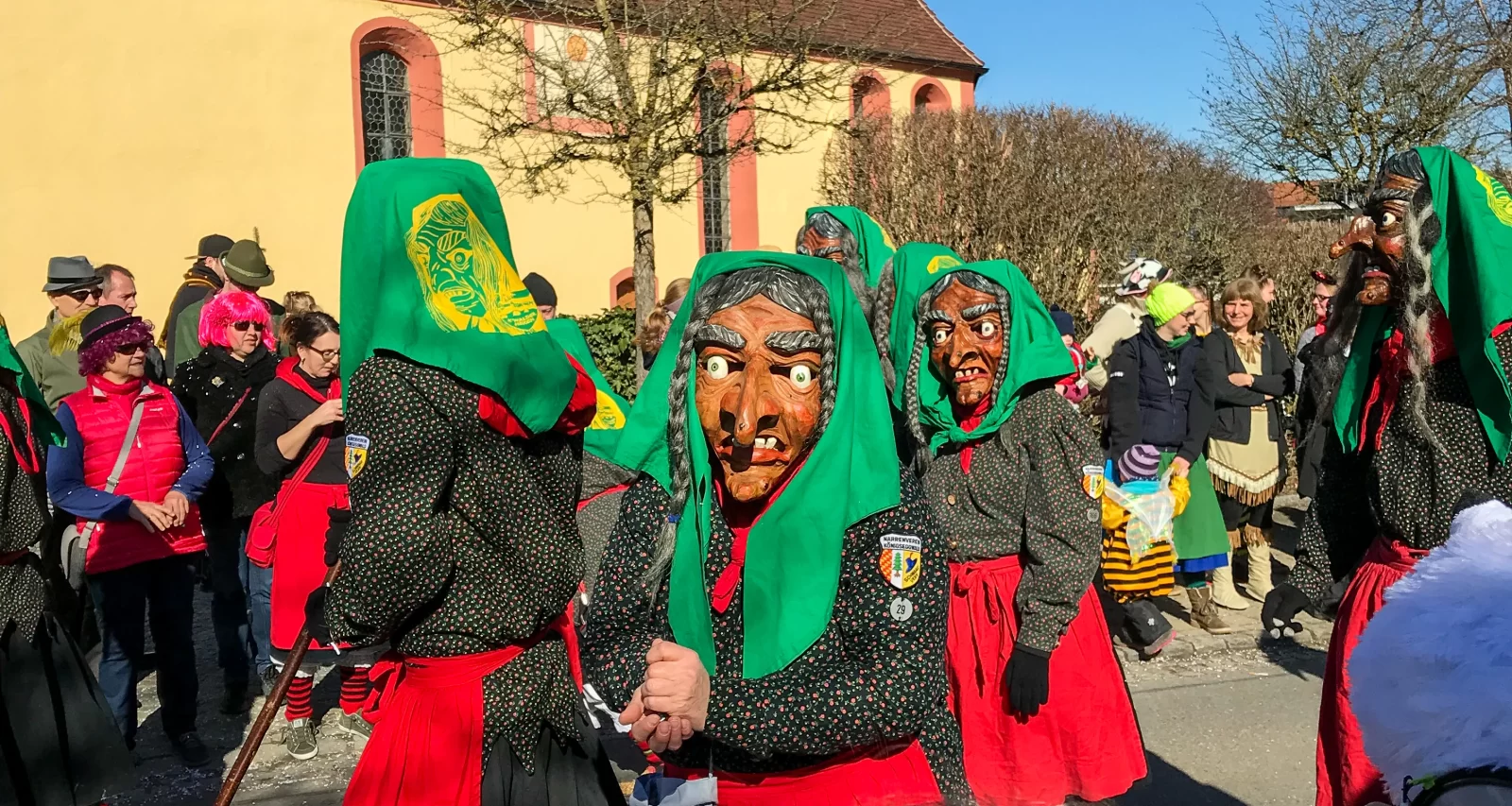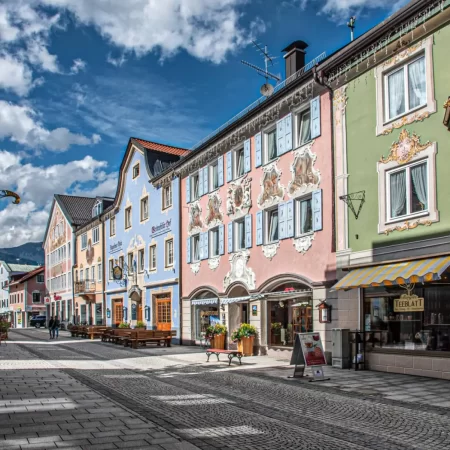Alemannic carnival 2023 in the southwest
From Epiphany to Ash Wednesday
The Alemannic Fasnacht (Alemannic carnival) officially begins on Epiphany, January 6th, with the traditional dusting off of masks – the so-called “Larven or Schemen” (larvae or schemes). The actual carnival then kicks off on “Schmotzige Dunnschtig”, the Thursday before Ash Wednesday, when the carnival parades start. Over the long weekend, Rose Monday and Shrove Tuesday, there are loud celebrations everywhere – be it with brass music, drums or whip cracking. On Ash Wednesday, it’s “all over” in the southwest, too. Symbolically, in some places a straw doll is carried to the grave or burned.
What is the difference between carnival vs. Alemannic carnival?
The difference makes it
One of the biggest differences between Carnival and Alemannic Fastnacht is certainly the beginning of the jesters season. While in the strongholds such as Cologne (Köln), Düsseldorf or Aachen this already officially starts on 11.11., Fasnet is limited to the period between Epiphany and Ash Wednesday. Both Carnival and Shrovetide have their origins in 13th-century celebrations to use up perishable food before the start of Lent. One noticeable difference between these two regional celebrations is the costumes. In Cologne Carnival, for example, there are no limits to the imagination when it comes to dressing up for meetings and parades. In Swabian-Alemannic carnival, on the other hand, the focus is clearly on traditional costumes and masks.
Jester costumes of the Alemannic carnival
Tradition is very important here
From witches and ghosts to devil figures and animal masks: Alemannic jester costumes and carnival figures come in numerous variations. The Wild Man and the Devil have been particularly popular since the Middle Ages. The exact design of the various costumes – called “Häs” in Swabian – varies from place to place or from guild to guild. The traditional “larvae”, i.e. the Alemannic carnival masks, are usually made of lime wood. Tools such as a “Saublodere” – a pig’s bladder filled with air – are also widespread among the carnival participants. It is important at the jesters’ meetings that it goes loudly. The “Mäschgerle”, as the jesters are also called, dance to Guggenmusik and everywhere the jesters cries “Hu Hu Hu” or “Narri-Narro” can be heard. “Helau” and “Alaaf”, on the other hand, are taboo at the jesters’ meetings in the southwest.
Where to go on Alemannic carnival 2023?
We have put together the most beautiful places
You want to experience the Alemannic carnival first hand? In the following places you should not miss the colorful hustle and bustle of the fifth season:
Carnival parade in Lindau on Lake Constance
The highlight of the Lindau carnival is clearly the carnival parade (German: Narrensprung), which traditionally takes place on Shrove Sunday on the Lindau Island. More than 2,500 carnival members of the Lindau jester Guild parade through the city with the Lindau Fanfare Train, among others. After the parade, the party continues at the harbor. The focus here is on the Lindauer Pflasterbuzen. The members of the historical jester group are dressed as wild demons and parade loudly through the alleys with their drums and bells.
"Ho Narro" at the Constance Alemannic Carnival
In Constance, the Swabian-Alemannic carnival begins with the famous Butzenlauf. A highlight on “Schmutziger Dunschtig” is the evening “Hemgdgonkerumzug” (Hemgdgonker parade), during which the fools run through the old town in white robes with the jester’s call “Ho Narro”. If you can’t make it to Konstanz for the carnival until Shrove Sunday, you can look forward to the big Sunday parade. More than 20,000 visitors are expected again at the carnival in Constance in 2023.
You are currently viewing a placeholder content from YouTube. To access the actual content, click the button below. Please note that doing so will share data with third-party providers.
More InformationInsider tip: Torchlight parade Illmensee
A parade with a very special atmosphere can be found at the Fasnet in Illmensee. During the popular torchlight procession in Illmensee, children and young people from the “Wasserspucker” (water spouters) jesters’ guild run ahead with torches and create a unique atmosphere during this traditional evening parade. Following the torchlight parade, the annual torchlight ball takes place.
Other great parades that are worth a visit
Carnival in Rottweil, Basel and Freiburg
Carnival in the oldest town in Baden-Württemberg: Rottweil
Carnival in Rottweil is best known for the Rottweiler “Narrensprung” (parade) on Fasnet Monday. The spectacle with around 4,000 participants attracts numerous visitors every year who cheer on the colorfully dressed Federhannes, Schantle and other historical figures of Alemannic carnival.
Let's go to the Basel Carnival
If you want to experience carnival in Switzerland, you can’t miss the colorful activities in Basel. The Basel carnival may not begin until the Monday after Ash Wednesday, but it starts early: at four in the morning with the so-called “Morgestraich”. Here, too, the jesters parade through the streets with larvae or in piper and tambour cliques. Only 72 hours later, also at four o’clock in the morning, the great days end with the “Ändstreich”.
Freiburg: Carnival in the Black Forest
The Freiburg Fasnet is also colorful and fun, especially in the period from “Schmutziger Dunschtig” to “Fasnetszischdig” (Shrove Tuesday). Highlights are the pub carnival, called “Friburger Beizefanet”, the street carnival and the Rose Monday parade. The traditional finale is the purse washing in the Freiburger “Bächle” (little creeks which are all over Freiburg).
How did you like our Alemannic carnival places?
Write us your tips for the Alemannic Fastnacht or become a scout and show us your favorite places in Germany.

